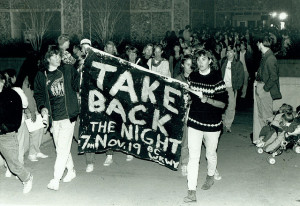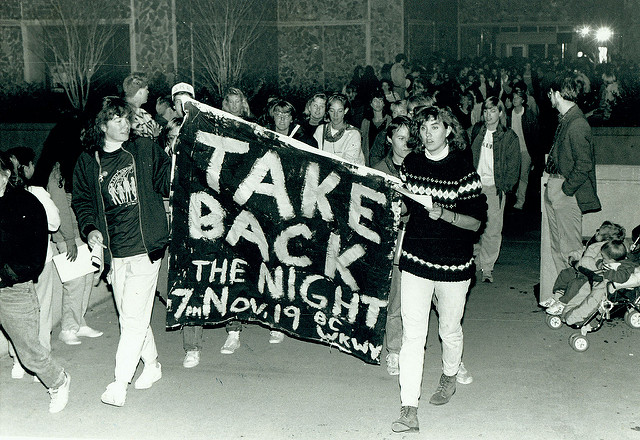
By Melissa Geil
From The Chronicle. Taken 19 November 1987 by Peter Aman.
Every August, the university town that I work in comes to life with students beginning and returning to school. Young women flock from sorority to sorority on the main street during fall rush, student stores has a line out the door, and I can no longer find a parking space.
In my classroom, first year students sit down eagerly, not yet jaded by the endless parade of syllabi and classroom expectations they will come so accustomed to during their college careers. Teaching first years is one of my favorite things about my job. I love to see the students at the beginning of this new journey, finding their feet in this new environment, and taking steps towards the people they will become.
For some (perhaps most), however, the first few months of college will not be the beginning of an idyllic quest of intellectual and personal growth. College is hard, leaving home can be troubling, and students don’t necessarily leave their problems behind when they come here. And, there is one more thing.
The first six to ten weeks of the fall semester are known as the >>red zone for sexual assault. The combination of students away from home for the first time, upticks in parties, and alcohol consumption make for a perfect storm of risk factors that lead to more incidents during this time period.
That’s not to say that sexual assaults don’t happen at other times of the year, but there is enough of an increase that colleges are taking note.
Many of the universities in North Carolina incorporate discussion of sexual assault awareness and response in their first year orientations, including UNCW and UNC-Chapel Hill. UNC-Chapel Hill has its own >>Gender Violence Services Coodinators who are housed in the Carolina Women’s Center.
In my classroom, I have also taken steps to increase awareness. After reading >>an article by UNC-CH graduate student and advocate >>Nadia Dawisha , I added a new section to my syllabi, informing students of the Title IX policy and letting them know about the resources available to them on campus. It’s not much, but, as Dawisha writes, the words have power: “Survivors have the information needed, and the campus community as a whole is watching and will hold perpetrators accountable for their actions.”
The >>Orange County Rape Crisis Center offer excellent information on the facts of sexual assault on college campuses and provides advice on what to do if you or someone you know is the victim of sexual assault or interpersonal violence.
Here’s a list of their advice:
- >>Know the facts about consent and interpersonal violence.
- >>Be an advocate for others.
- W >>atch out for potentially dangerous situations and intervene when possible , keeping in mind that there are >>resources for help available at all hours of the day and night .
- >>Stay alert and be aware of your surroundings.
- Try >>the Companion app , an online system that allows you to stay connected with people after you have separated with them to make sure that they arrive home safely.
- If you or someone you know is seeking help after experiencing sexual assault, know that >>there are resources available . The Orange County Rape Crisis Center, in addition to their >>24-Hour Help Line , offers a wide variety of >>support groups and >>resources for survivors .
- Be safe, know the facts, and use your resources. You will be supported and you will be believed.

There are no comments
Add yours